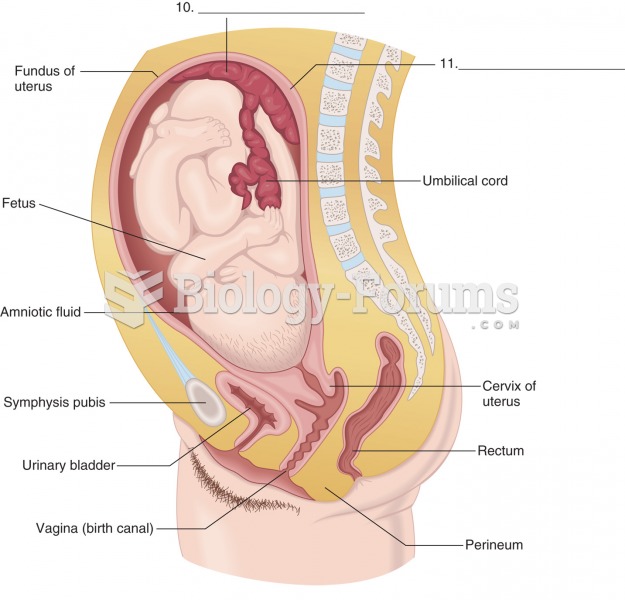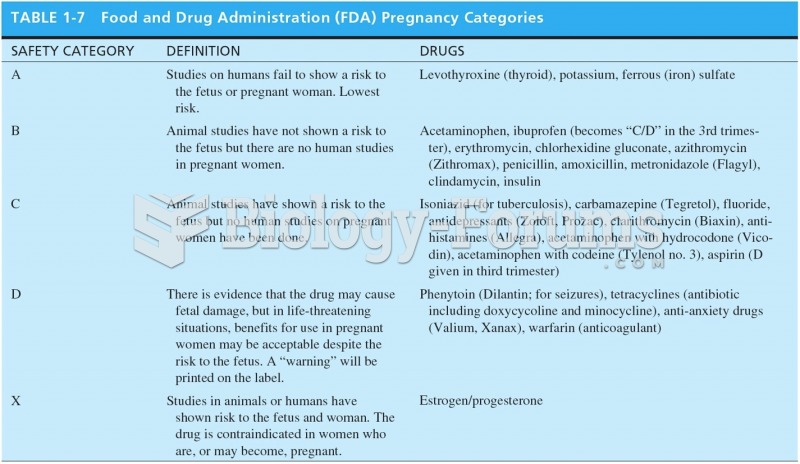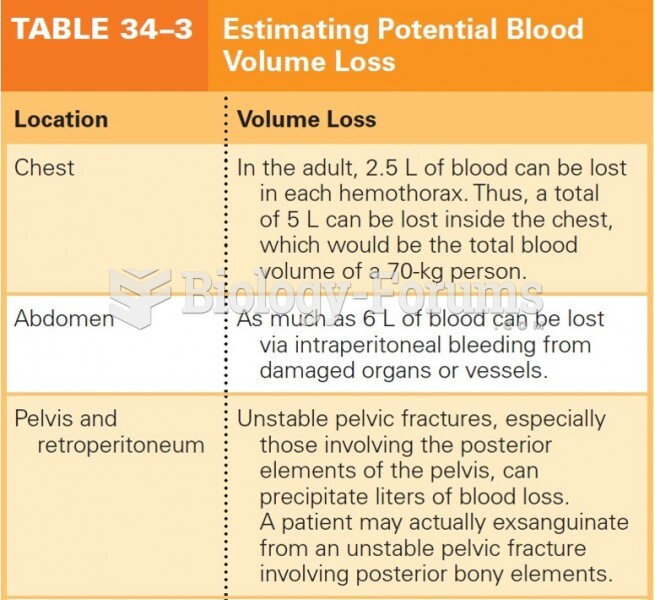Answer to Question 1
ANS: A, D, E
Flat nipples appear soft, like the areola, and do not stand erect unless stimulated by rolling them between the fingers. Inverted nipples are retracted into the breast tissue. These nipples appear normal; however, they will draw inward when the areola is compressed by the infant's mouth. Dome-shaped devices known as breast shells can be worn during the last weeks of pregnancy and between feedings after birth. The shells are placed inside the bra, with the opening over the nipple. The shells exert slight pressure against the areola to help the nipples protrude. The helpfulness of breast shells has been debated. A breast pump can be used to draw the nipples out before feedings after birth. Everted nipples protrude and are normal. No intervention will be required. Cracked, blistered, and bleeding nipples occur after breastfeeding has been initiated and are the result of improper latching on. The infant should be repositioned during feeding. The application of colostrum and breast milk after feedings will aid in healing.
Answer to Question 2
ANS: B, C, D
The presence of colic is a self-limiting temporary condition seen in infants during the first few months of life. Although there are many theories about its cause, none has been determined to show direct causation. Providing a quiet environment and a consistent feeding schedule, positioning the infant in an upright position during feeding, burping the infant frequently, and using supplements or medications that have antispasmodic properties may be recommended. Chamomile tea is reported to have antispasmodic effects. Feeding the infant on an on demand schedule may exacerbate the condition as a result of overfeeding.







